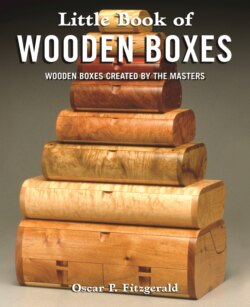Читать книгу Little Book of Wooden Boxes - Oscar Penn Fitzgerald - Страница 8
Ancient Boxes
ОглавлениеThe numerous boxes recovered from King Tutankhamen’s tomb were typical of those that held everyday items the pharaohs would need in the afterlife. One small box held the mummified bodies of two stillborn babies that may have been the king’s children. A rectangular wooden box with a hunchbacked lid was decorated with scenes of the hunt or of battles painted on ivory panels on the top, and with floral and animal depictions on the sides. It probably held the king’s robes. Like most of the wooden boxes found in the tomb, it was made with mortise-and-tenon joints and carefully cut dovetails—the same joints used by woodworkers today. The box was secured by string threaded around mushroom-shaped knobs and tied with a knot that was then sealed.
After the fall of the Roman Empire, boxes survived in monasteries and castles in Europe during the Middle Ages.
Box with angels, intended to contain small bottles of holy oils. Champlevé enamel over gilt copper, early thirteenth century, Limoges (Limousin, France).
Many held vestments, holy relics, incense, and plate. Small caskets or decorated boxes served as jewel or valuables boxes. Larger cast-iron boxes were common, and medieval dispatch boxes typically had two keys, one each for sender and recipient.
